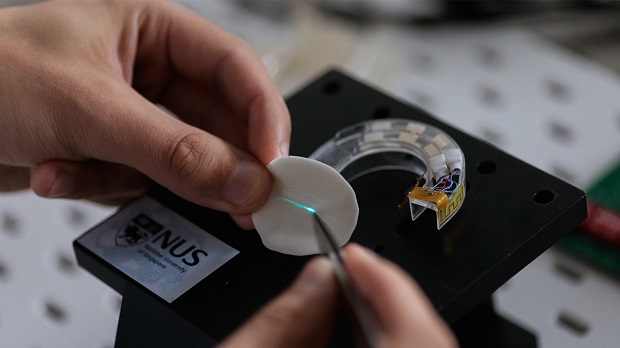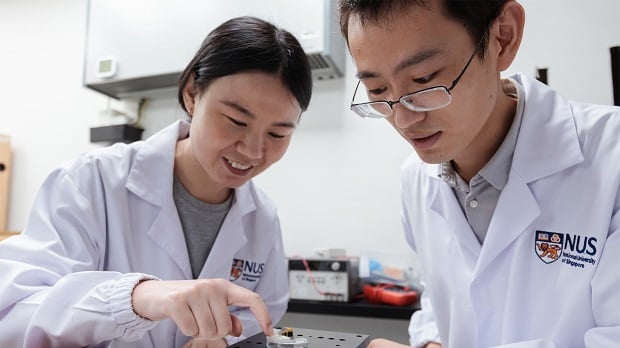
Scientists invent interactive mouthpiece that can be used to control electronic devices
Singapore scientists have invented the world's first interactive mouthpiece that can be used to control electronic devices, including computers, smartphones and wheelchairs.
The invention, developed by a research team led by Professor Liu Xiaogang of the National University of Singapore (NUS) together with collaborators from Tsinghua University, is light and compact (it weighs only about 7 grams), affordable and easy to use. It can detect the strength of a bite, with which it can control various devices.

Technologies -- to help people with disabilities
Recently, many scientists have been working on technologies that will help people with disabilities achieve a higher level of independence and autonomy. But most of these technologies have significant disadvantages.
- There is, for example, voice recognition technology, but it requires a lot of memory and can only work in an environment with low noise levels. If it is too noisy, a person will not be able to use this technology properly.
- Gaze tracking technology also seems interesting and promising, but it requires a camera in front of the user, which can also be challenging.
- Brain-computer interfaces certainly seem promising, but they are quite invasive, plus they require a lot of bulky wires.
All of the above technologies are also not adequately protected (including against hacking and other external interference) and cannot provide the user with the privacy he or she needs.
Bite-force as a key to controlling electronic devices
But the use of bite force to control devices can be a very interesting alternative to other technologies to help people with disabilities. This area, according to experts, is understudied, despite being promising.

When the new mouthpiece developed by Singapore specialists is in the user's mouth, he or she can clench the jaw with a certain force or tap the tooth against the tooth a certain number of times for the system to understand and transmit to the electronic device the command that it should perform (for example, the electronic wheelchair should start moving or rotate to some side).
As Professor Liu Xiaogang noted, the optoelectronic system developed by his team can convert complex bite patterns into commands for electronic devices with 98% accuracy. In doing so, different bite forces or numbers of knocks can be assigned different scenarios and commands.
The current prototype is designed for straight teeth, but experts say it is possible to design mouth guards with unevenly spaced phosphor-impregnated pads - for users with uneven teeth or those who wear dentures.
Manufacturing each smart mouthpiece in the lab currently costs S$100 (about US$70), but the experts believe the cost of the device will be significantly reduced if mass production begins.
- Related News
- Google is developing a budget smartwatch
- Brazilian surgeon performs operation by using Apple Vision Pro
- Black Shark smart ring from Xiaomi to have interesting characteristics and phenomenal autonomy: 180 days of operation without recharging (photo)
- Woman claims she had bruises under her eyes after using Apple Vision Pro: What other problems does it cause?
- Is Samsung preparing a competitor to the Apple Vision Pro?
- Rollme unveils R2 smart ring that tracks health and works in standby mode for 60 days
- Most read
month
week
day
- How will new technologies change future of finance? Interview with director of Apricot Capital (video) 761
- 10 most interesting architectural works of Zaha Hadid 756
- 5 original buildings with curious optical illusions (photos) 749
- Google is developing a budget smartwatch 649
- Alphabet will pay dividends for the first time in its history 646
- 4 flares erupted from Sun in rare event: the Earth may be hit by geomagnetic storm (video) 639
- Large taxpayers of Armenia’s IT sector: What changes have taken place in 2024 Q1? 632
- Date of new Apple presentation known: When will they show us new iPad Pro with OLED screen? 627
- Mutated bacteria resistant to drugs found on the ISS: What does this mean and why is it a problem? 622
- BAR Plus 2024: Samsung introduces USB drive that can withstand immersion in salt water for 72 hours (photo) 613
- Archive
